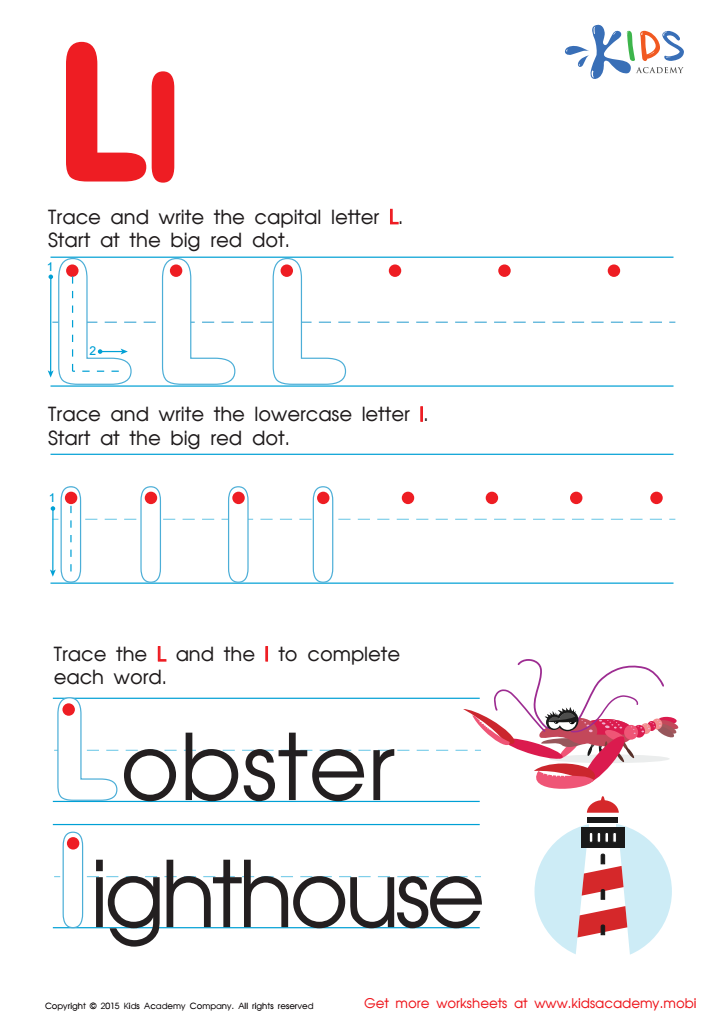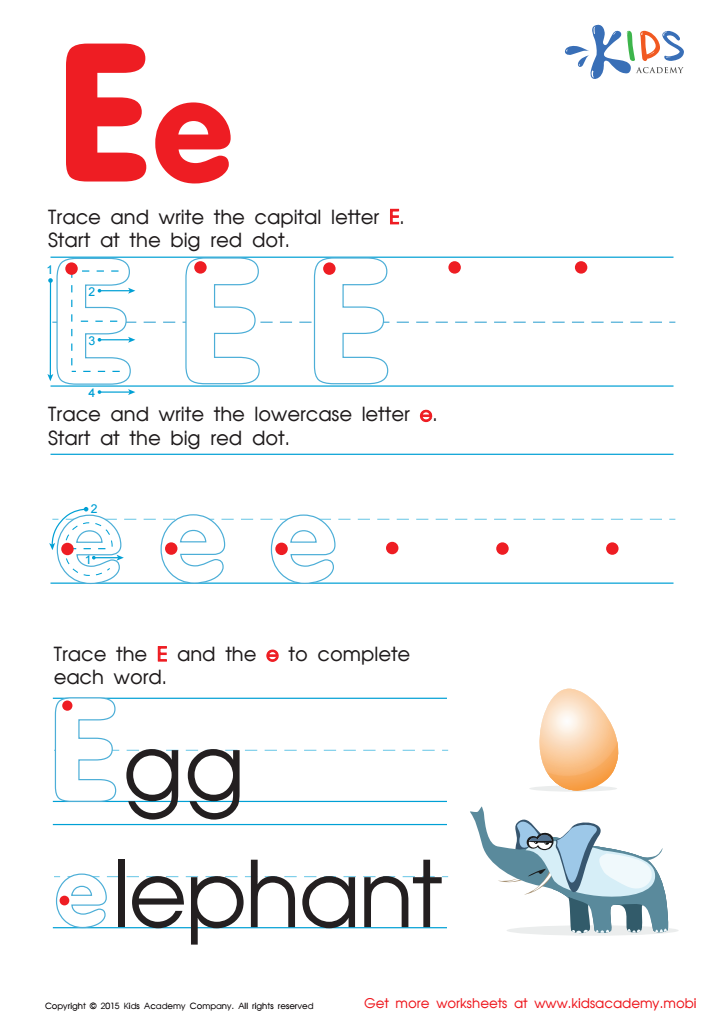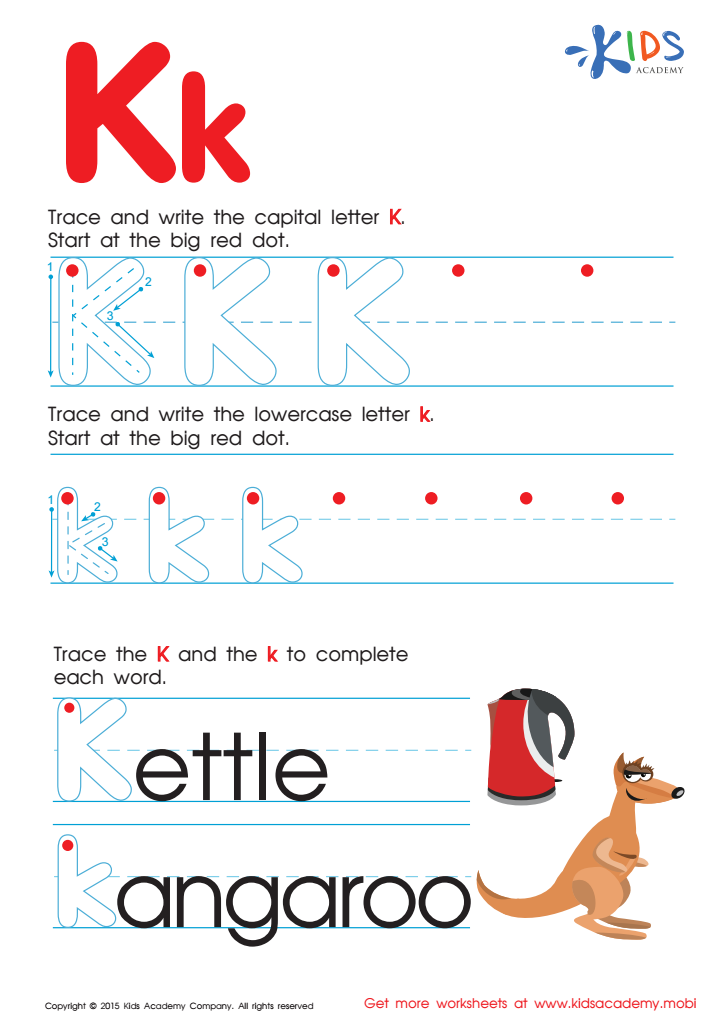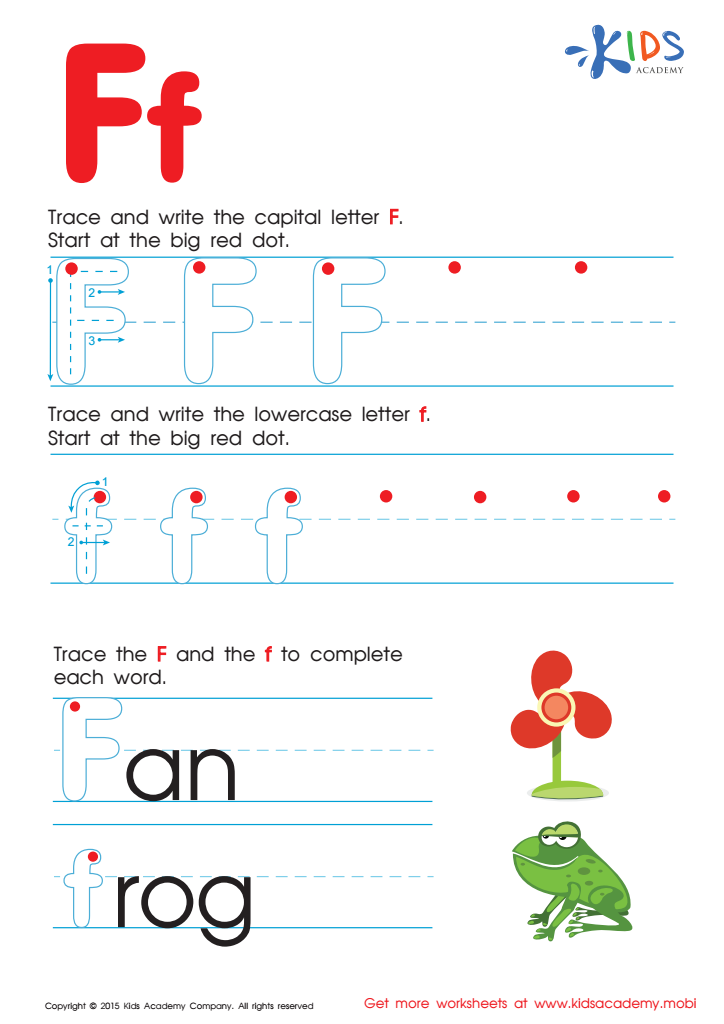Handwriting Skills Normal Letter Recognition Worksheets for Ages 4-8
5 filtered results
-
From - To
Discover our "Handwriting Skills Normal Letter Recognition Worksheets" designed specifically for children aged 4-8. These engaging worksheets aim to enhance children's handwriting abilities while simultaneously boosting their letter recognition skills. With a variety of fun and interactive activities, kids will practice identifying both uppercase and lowercase letters, all while developing their fine motor skills. Tailored to foster a love for learning, these worksheets ensure that children build a solid foundation in writing and reading. Perfect for home or classroom use, these resources encourage creativity and confidence in young learners as they embark on their literacy journey. Enhance your child's learning experience today!


Letter Q Tracing Page


Letter L Tracing Page


Letter E Tracing Page


Letter K Tracing Page


Letter F Tracing Page
Handwriting skills and normal letter recognition are fundamental components of early literacy development for children aged 4-8. Parents and teachers should prioritize these skills because they serve as the foundation for effective communication and overall academic success. At this age, children are developing their fine motor skills, which are critical for developing proper handwriting techniques. Good handwriting not only aids in expressing thoughts clearly but also enhances a child's confidence in their writing abilities.
Moreover, letter recognition is vital for reading readiness. When children can easily identify letters, they can better associate them with sounds, forming the basis for phonics and vocabulary development. This recognition boosts their ability to decode words, setting the stage for fluent reading.
Additionally, developing handwriting alongside letter recognition can improve cognitive processes. When children practice forming letters, they enhance their memory and understanding of the alphabet. Such skills are interlinked; a strong grasp of letter recognition can lead to more legible writing, fostering a positive feedback loop of learning.
Ultimately, when parents and teachers prioritize these skills, they not only support a child’s immediate educational goals but also equip them for a lifetime of effective communication and learning.
 Assign to My Students
Assign to My Students






















